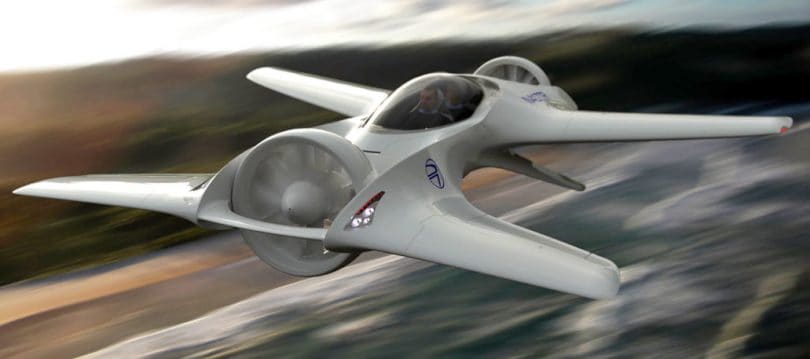Paul DeLorean sees in the DR-7 no mess for empires. “The design solves a lot of today’s transport problems and also infrastructure problems such as air pollution and road congestion,” he said. Currently, there are two models of the DR-7. The first is 76 centimeters in size and was used to check the physical properties, while the second one already has a third of the size of the original. In a year, DeLorean wants to present a prototype DR-7 and test in the California desert.
The fact that the goals of DeLorean Aerospace are ambitious, but not unrealistic, is a glance at the tech industry: Google co-founder Larry Page invested in the flying jet ski Kitty Hawk Flyer and also Neva Aerospace works with his AirQuadOne on a City-Flugmobil. However, both companies rely on human pilots and not like DeLorean Aerospace DR-7 on a computer control.
Either way, experts agree that the DR-7 flying car is no longer a future music. The technology is already available, but the traffic regulation becomes trickier. Although MIT researchers have already submitted proposals for the regulation of urban air transport in the US, third-dimensional steering is probably the most challenging task.
All this does not deter companies like Uber, Airbus and Darpa and some more. They see the future of the inner city traffic in the air. It would be a good thing for the environment: While stinking gasoline cars on the floor are comfortably on the bumper, aircrafts like the DR-7 could simply fly over the traffic jam. Working companies and start-ups continue to be so energetic in their projects, experts estimate that flying cars are already part of everyday traffic in five to 15 years.







